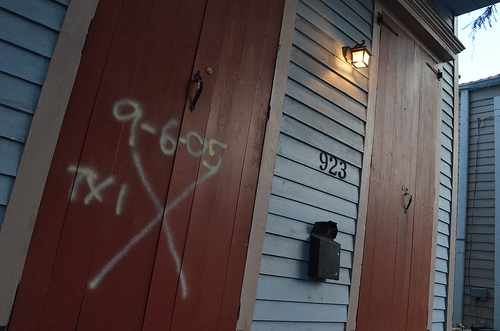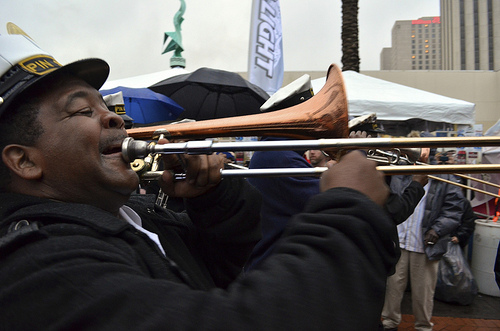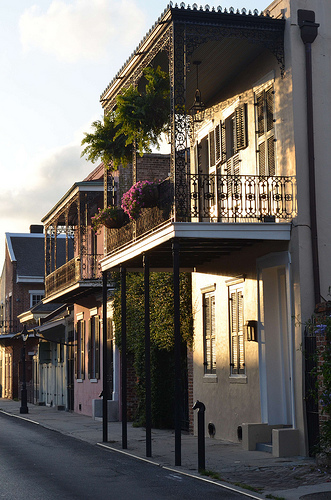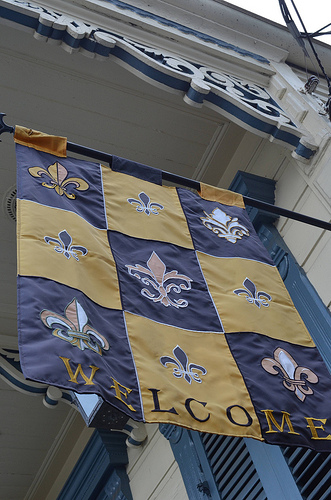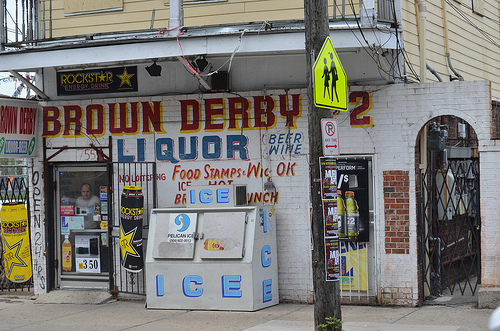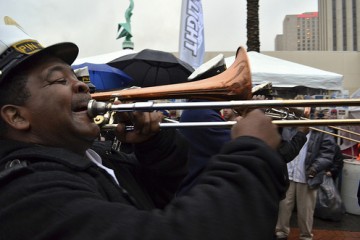The Broke-Ass Insider’s Guide to New Orleans Part 1: Sometimes it Takes an Outsider
From Drew Brees to Hog’s Head Cheese, James Black to Sazerac: Here’s our New Orleans insider’s guide, neighborhood by neighborhood, to all the things that make the Crescent City the greatest city in America.
New Orleans Creole cottage…which has seen better days
When I travel, I try not to tell people I live in New Orleans. This isn’t because I’m not proud of the city I live in. It’s just the opposite. I shy away from talking about the city to any outsiders because everybody has their own opinion on the city. The majority of people I talk to love the city. They tell me how they’ve been watching Treme, and ask how it’s been since Katrina. The dreaded “how is New Orleans doing?” always comes up. There’s also a handful that will tell you how well they know the city a from their frequent weekend vacations from adjacent, small Baptist towns. They come here to live on the edge for a few days with a Hurricane at 1 in the afternoon. These are the same people that don’t realize anything exists beyond the French Quarter.
Some people come to New Orleans every year for Mardi Gras and only have that as their basis for what the city is. Their experience consists of half hour lines for the limited number of bathrooms on St. Charles Ave. and a stay with their friend in Uptown who goes to Tulane for grad school. These visitors always seem to miss Zulu, the best parade, at 8 am on Mardi Gras Day. They certainly have no clue as to what’s happening with the costuming on the other side of Esplanade.
The other annual visitor with an equally warped idea of the city is the Jazz Fest visitor. These people come to party. Unfortunately buying LSD on Frenchman St. and watching various members of the Meters play with various members of the Grateful Dead till 5 am, then heading to the Maple Leaf for a member of the Neville family to play a late late night show doesn’t happen every week. Some folks have to go to work.
The Pinstripe Brass Band
While many love the city from their brief visits, others have quite a different story. Theirs are marked by vomit piles on Bourbon Street at 3:30 in the morning outside Barely Legal Strip Club followed by a wrong turn toward their hotel room they were staying at for their business conference which led to an armed robbery close to the Iberville Projects by “two young black males in black hoodies.” For some reason these people are never sober enough to accurately identify their assailants or how they ended up so far from there company’s hotel quarters. These are the people that tell me “I’m never going to New Orleans again.” There’s also the puritan type who descend on the city during Southern Decadence Fest (New Orleans version of Pride Fest) and yell obscenities at homosexuals as burley men with mustaches flash their newly pierced genitals in their faces. These people will tell you New Orleans is a god forsaken place that breeds sin and destruction.
The fact it that not all of New Orleans smell like stale urine, contrary to popular belief. People do live here and make an honest living. It can be a very family oriented environment with a genuine community that takes care of their own. Most residence of the city rarely make their way into the French Quarter. New Orleans is an endlessly fascinating environment, with nuances in every neighborhood going all the way back to the 1800s when Canal Street separated Creole New Orleans from the American Sector. So disregard all your preconceived notions of what New Orleans is and stick with me for a few weeks as I give you some real insider information on all the establishments, neighborhood by neighborhood, that make this city the greatest place in America.
A French Quarter sunset
Briefing on Neighborhood Divisions
Before I go any further with this piece, I have a confession. I’m an outsider. No matter how long I live here, I’ll always be an outsider. My grandfather is from here (6318 S. Robertson St. to be specific, though they constantly changed houses the day before the first of the month to keep from paying rent.) My family hasn’t lived in New Orleans since 1935. I’m from St. Louis. No offense to St. Louis, it’s a great town, but nobody will question your authority on the city if they find out you weren’t born there. A real New Orleanian will say you have to be born at the now defunct Charity Hospital to truly be a local. Though I may not be from here, it sometimes takes an outsider to see how beautiful and unique a culture is.
Flag Waving on a Marigny Porch
Now that we have that embarrassing confession out of the way, let’s get back to it. New Orleans is a small city. Without traffic, you can drive from one end of the city to the other in about 15 minutes. This series is only going to cover Orleans Parish. We’ll start west in Uptown and head east till we get to the Lower 9th Ward. I know the good people of Jefferson Parish and St. Bernard Parish will have their own ideas as to where all the real New Orleans folks hang out who left the city years ago during the white flight movement, but we’ll let them write their own guide someday. So far I still haven’t seen it.
Downtown in New Orleans is not the same as what people think of as downtown in other cities. Historically New Orleans is divided between Uptown and Downtown by Canal St. Uptown is the area the Anglos settled in after the city had already been under French and Spanish rule. Downtown, the oldest part of the city including the French Quarter, Treme, Bywater, and Lower 9th Ward, is the Creole French speaking side. That’s why the street names change at Canal St. (i.e. Charters St. turns into Camp St., Royal St. into St. Charles Ave.) So this means that the New Orleans Central Business District is technically part of Uptown.
The Brown Derby #2 Liquor Store
The other term that comes up a lot when talking about New Orleans neighborhoods is ward. Many cities in the U.S. are divided into wards but don’t use those divisions anymore to designate neighborhoods. New Orleans still does, to some extent. Most wealthy residents of the city have no idea what ward they are in. It’s primarily the lower income, African American neighborhoods that still use this term. The three most commonly referred to wards are the 7th, 8th, and 9th ward, all Downtown. Sometimes you’ll here people say they’re from the 5th or 6th ward, which is the area north of the French Quarter in Mid City. There’s the 3rd ward, home of the infamous Calliope Projects (Master P and the rest of No Limit Records’ original stomping grounds), and the 17th ward, home of Cash Money Records’ Lil’ Wayne and Birdman a.k.a. Baby. Occasionally 10th ward and 12th ward will also come up, which is Central City. Listen to these New Orleans bounce tracks to give you an idea of how the wards are used: Kilo – The Ward Song, 6th Ward Dumain – Crowd Mova Crystal, or Big Freedia – Na Who Mad.
Don’t let the aforementioned bounce track scare you. There’s a lot more to come. Now that we have our background out of the way, we’re ready to explore. Check in next week as we start things off in Uptown’s 17th ward.
New Orleans Word of the Day: Whodi (wo-di) – a term of endearment for a friend stemming from the word ward, as in someone who lives in your same ward.
Example: Say whodi wat’s happenin wich ya’


